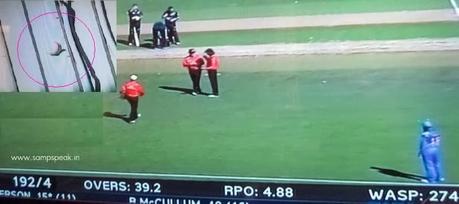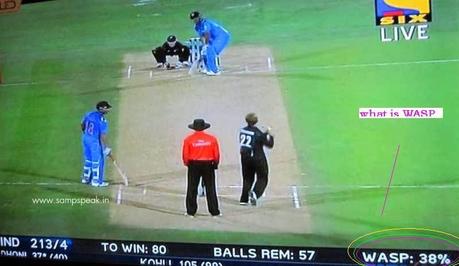 To most of us – most insects look alike…. Wasps and honey bees can be mistaken for one another because both insects are capable of giving painful stings. While honey bees can attack when provoked, wasps are naturally and more aggressive predators. There are hornets, bees, wasps and more…. wasp is typically defined as any insect of the order Hymenoptera and suborder Apocrita that is neither a bee nor an ant. !!!! Almost every pest insect species has at least one wasp species that preys upon it or parasitizes it, making wasps critically important in natural control of their numbers, or natural biocontrol. Parasitic wasps are increasingly used in agricultural pest control as they prey mostly on pest insects and have little impact on crops.
To most of us – most insects look alike…. Wasps and honey bees can be mistaken for one another because both insects are capable of giving painful stings. While honey bees can attack when provoked, wasps are naturally and more aggressive predators. There are hornets, bees, wasps and more…. wasp is typically defined as any insect of the order Hymenoptera and suborder Apocrita that is neither a bee nor an ant. !!!! Almost every pest insect species has at least one wasp species that preys upon it or parasitizes it, making wasps critically important in natural control of their numbers, or natural biocontrol. Parasitic wasps are increasingly used in agricultural pest control as they prey mostly on pest insects and have little impact on crops. At Napier NZ made 292 for 7 (Williamson 71, Anderson 68*, Taylor 55, Shami 4-55) and beat India 268 (Kohli 123, Dhoni 40, McClenaghan 4-68) by 23 runs…… remember every critic of Sachin Tendulkar would try to argue stating that when Sachin scores a ton, India would lose – statistically that was wrong… even more wrong is the yardstick… today Virat Kohli played such a fine knock… He averages an astonishing 64 in chases, at an even less believable strike rate of 92, but he has now scored a second-innings century in a defeat, his first in 12. One cannot take away the credit because he ended up in the losing side.
 This morning Corey Anderson furthered his IPL bargain by scoring a brisk 68 off 40 to take New Zealand to 292, and then took the wickets of Shikhar Dhawan and Ajinkya Rahane…. One of the sixers that he hit of Ishant went 122 meters long and landed on the roof of the ground, necessitating the replacement of the ball. See this photo collaged with the roof….and did you observe anything.Cricket is never pure Maths or Economics… an ordinary person might see a scoreline and think that one team is certain to lose – while to a pundit who know the bowling attack, the conditions, the stage of the match, batting line-up, past performances, ground, weather conditions, the captain’s tactic and more… the result could appear different and the Cricket pundit who analyses is more like to predict it more correct… !!! ~ and it is the middle overs which is always challenging for the analyst as the game could turn either way…. The most important and interesting aspect of Cricket has always been its ‘unpredictability’……….. Though it might take more time to be proved – Sky Sports thanks University of Canterbury (UC) research, have come closer to provide an answer to the `who’s winning’ question. In the one day internationals (ODIs) and Twenty20 games shown on Sky Sport this summer, statistical information will include answers from the WASP—the `winning and score predictor’ ~ and that is what was seen by all of us today – in the righthand bottom of the screen – when we saw the match live. In the first innings, the WASP was given as a predicted score. In the second innings, itwas the probability of the batting team winning the match – in terms of %. This is based on models developed by UC PhD graduate Dr Scott Brooker and his supervisor Dr Seamus Hogan. According to its makers, WASP is not a forecast that could be used to set TAB betting odds. Rather they are estimates about how well the average batting team would go against the average bowling team in the conditions under which the game is being played given the current state of the game.
This morning Corey Anderson furthered his IPL bargain by scoring a brisk 68 off 40 to take New Zealand to 292, and then took the wickets of Shikhar Dhawan and Ajinkya Rahane…. One of the sixers that he hit of Ishant went 122 meters long and landed on the roof of the ground, necessitating the replacement of the ball. See this photo collaged with the roof….and did you observe anything.Cricket is never pure Maths or Economics… an ordinary person might see a scoreline and think that one team is certain to lose – while to a pundit who know the bowling attack, the conditions, the stage of the match, batting line-up, past performances, ground, weather conditions, the captain’s tactic and more… the result could appear different and the Cricket pundit who analyses is more like to predict it more correct… !!! ~ and it is the middle overs which is always challenging for the analyst as the game could turn either way…. The most important and interesting aspect of Cricket has always been its ‘unpredictability’……….. Though it might take more time to be proved – Sky Sports thanks University of Canterbury (UC) research, have come closer to provide an answer to the `who’s winning’ question. In the one day internationals (ODIs) and Twenty20 games shown on Sky Sport this summer, statistical information will include answers from the WASP—the `winning and score predictor’ ~ and that is what was seen by all of us today – in the righthand bottom of the screen – when we saw the match live. In the first innings, the WASP was given as a predicted score. In the second innings, itwas the probability of the batting team winning the match – in terms of %. This is based on models developed by UC PhD graduate Dr Scott Brooker and his supervisor Dr Seamus Hogan. According to its makers, WASP is not a forecast that could be used to set TAB betting odds. Rather they are estimates about how well the average batting team would go against the average bowling team in the conditions under which the game is being played given the current state of the game. There have been various parameters of which ‘projected scores’ at different levels are displayed… you could have watched that if the score is 200 in 40 overs @ 5 per over – it would simply be 250 in 50 – but projected score would reveal at current rate 250; @ 6 260; @ 10 – 300; @ 12 320 and…. Well, that is mere probability – does not reckon the quality of batsmen, the weather, the ground, the quality of opposition, the strategy of Captain / coach / Manager and any other variant… suddenly you could see a 30 runs over (recall what Faulkner did to Ishant Sharma, the other day) – all predictions could go haywire. Again this projected over concept was being made only in the 1st innings of the limited over match…. For the team chasing, it was always the target – required run rate; current run rate and rate at which they need to score for eclipsing the target. As we saw in Sony Six- the channel broadcasting the match: the value of ‘WASP’, kept changing throughout the match… in chase – when Kohli got out, it fell down to 11% too… proverbially giving the chasing team no chance for a win. Winning and Score Predictor (WASP) takes into account the current scores and performance of the playing teams and even their past records to draw up a probability. In the first innings, the WASP gives a predicted score. In the second innings, it gives a probability of the batting team winning the match. WASP is no insect nor any tool for better - WASP is a way of calculating who is winning, rather than a prediction of who will win. Despite a low WASP, team chasing could still win – by a better performance on that day. The WASP prediction depends on an input of the par score for the conditions (pitch, ground size, etc.) in which the game is being played. If Sky uses the same graphics as last year, you can infer what Sky has chosen as the par score when they put up the WASP worm showing how the WASP prediction has evolved through the innings. The assumed par score is the number that WASP started at when 0 balls had been bowled. So in a chase, the values of 0 and 100 are possible even if the game hasn't actually been won yet. According to the explanation of the experts, the models are based on a database of all non-shortened ODI and 20-20 games played between top-eight countries since late 2006. The first-innings model estimates the additional runs likely to be scored as a function of the number of balls and wickets remaining. The second innings model estimates the probability of winning as a function of balls and wickets remaining, runs scored to date, and the target score. The estimates are constructed from a dynamic programme rather than just fitting curves through the data. Any model to succeed would go by normal and not extraordinary circumstances – if in a rousing start 20 runs are scored in the first over, WASP calculation can be wrong…. So also in a situation where wickets fall in a heap in say less than 10 overs – teams could still battle out and change the situation totally. ~ ~ and anyway this is an external tool for the broadcasters and has nothing to do with the game or the way it is played – just as D&L played havoc in that 1992 World Cup when South Africans were left starring at an improbable 22 from a single delivery. ~ and as they say the intricacies of the game is so delicate that nothing can be typecast in a pre-calculated format.With regards – S. Sampathkumar19th Jan 2014. @ 1530 hrs.
There have been various parameters of which ‘projected scores’ at different levels are displayed… you could have watched that if the score is 200 in 40 overs @ 5 per over – it would simply be 250 in 50 – but projected score would reveal at current rate 250; @ 6 260; @ 10 – 300; @ 12 320 and…. Well, that is mere probability – does not reckon the quality of batsmen, the weather, the ground, the quality of opposition, the strategy of Captain / coach / Manager and any other variant… suddenly you could see a 30 runs over (recall what Faulkner did to Ishant Sharma, the other day) – all predictions could go haywire. Again this projected over concept was being made only in the 1st innings of the limited over match…. For the team chasing, it was always the target – required run rate; current run rate and rate at which they need to score for eclipsing the target. As we saw in Sony Six- the channel broadcasting the match: the value of ‘WASP’, kept changing throughout the match… in chase – when Kohli got out, it fell down to 11% too… proverbially giving the chasing team no chance for a win. Winning and Score Predictor (WASP) takes into account the current scores and performance of the playing teams and even their past records to draw up a probability. In the first innings, the WASP gives a predicted score. In the second innings, it gives a probability of the batting team winning the match. WASP is no insect nor any tool for better - WASP is a way of calculating who is winning, rather than a prediction of who will win. Despite a low WASP, team chasing could still win – by a better performance on that day. The WASP prediction depends on an input of the par score for the conditions (pitch, ground size, etc.) in which the game is being played. If Sky uses the same graphics as last year, you can infer what Sky has chosen as the par score when they put up the WASP worm showing how the WASP prediction has evolved through the innings. The assumed par score is the number that WASP started at when 0 balls had been bowled. So in a chase, the values of 0 and 100 are possible even if the game hasn't actually been won yet. According to the explanation of the experts, the models are based on a database of all non-shortened ODI and 20-20 games played between top-eight countries since late 2006. The first-innings model estimates the additional runs likely to be scored as a function of the number of balls and wickets remaining. The second innings model estimates the probability of winning as a function of balls and wickets remaining, runs scored to date, and the target score. The estimates are constructed from a dynamic programme rather than just fitting curves through the data. Any model to succeed would go by normal and not extraordinary circumstances – if in a rousing start 20 runs are scored in the first over, WASP calculation can be wrong…. So also in a situation where wickets fall in a heap in say less than 10 overs – teams could still battle out and change the situation totally. ~ ~ and anyway this is an external tool for the broadcasters and has nothing to do with the game or the way it is played – just as D&L played havoc in that 1992 World Cup when South Africans were left starring at an improbable 22 from a single delivery. ~ and as they say the intricacies of the game is so delicate that nothing can be typecast in a pre-calculated format.With regards – S. Sampathkumar19th Jan 2014. @ 1530 hrs.

